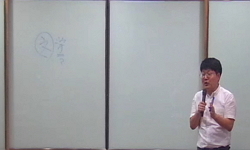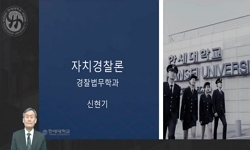This study examines the politics of ‘the lifting of the publish ban’ on the writers who went to North Korea during the Korean War, by focussing on two symbolic scenes before and after the lifting of the ban. In Korea after the Korean War, publishi...
http://chineseinput.net/에서 pinyin(병음)방식으로 중국어를 변환할 수 있습니다.
변환된 중국어를 복사하여 사용하시면 됩니다.
- 中文 을 입력하시려면 zhongwen을 입력하시고 space를누르시면됩니다.
- 北京 을 입력하시려면 beijing을 입력하시고 space를 누르시면 됩니다.

월북문인 해금의 이면—‘불화’의 소멸 그 이후 = The other side of ‘lifting of the publication ban’(1988) on the writers who went to North Korea
한글로보기부가정보
다국어 초록 (Multilingual Abstract)
Before the official announcement of ‘the lifting’ in July 7th 1988, a son of poet Jung Ji-yong appealed that his father did not voluntarily go to the North, that is, he was forcibly taken to there, therefore works of Jung Ji-yong should be(could be) released. This request lasted for several years but South Korean government based on the security police and military force didn’t accept it before the democratization of 1987. Inside of the police order which devide and exclude ‘the sensible’(Jacques Ranciere’s term), politics or strategy of ‘identification’ (voluntary/forcible moving to the North) was not efficient.
On the other hand, after the lifting of the ban in 1988, the most important issue on publishing released works was copyright problem. The North Korean writer’s heirs who lived in South Korea earned and approved the status of copywriters. And in this aspect, a publisher, who had fought for long time against the police government by publishing ‘banned books’, instituted lawsuits against the government for its illegal confiscation and ban which it had committed before the lifting. The publisher lost lawsuits because he was not qualified as a copyrighter. But this judicial events evoked that discords among political subjects never finished after 1987-1988, and democracy after the democratization were always problematic in the police order.
This study examines the politics of ‘the lifting of the publish ban’ on the writers who went to North Korea during the Korean War, by focussing on two symbolic scenes before and after the lifting of the ban. In Korea after the Korean War, publishing and research on the works of writers(artists) who chose communist North Korea were strictly banned for several decades.
Before the official announcement of ‘the lifting’ in July 7th 1988, a son of poet Jung Ji-yong appealed that his father did not voluntarily go to the North, that is, he was forcibly taken to there, therefore works of Jung Ji-yong should be(could be) released. This request lasted for several years but South Korean government based on the security police and military force didn’t accept it before the democratization of 1987. Inside of the police order which devide and exclude ‘the sensible’(Jacques Ranciere’s term), politics or strategy of ‘identification’ (voluntary/forcible moving to the North) was not efficient.
On the other hand, after the lifting of the ban in 1988, the most important issue on publishing released works was copyright problem. The North Korean writer’s heirs who lived in South Korea earned and approved the status of copywriters. And in this aspect, a publisher, who had fought for long time against the police government by publishing ‘banned books’, instituted lawsuits against the government for its illegal confiscation and ban which it had committed before the lifting. The publisher lost lawsuits because he was not qualified as a copyrighter. But this judicial events evoked that discords among political subjects never finished after 1987-1988, and democracy after the democratization were always problematic in the police order.
국문 초록 (Abstract)
이 글은 1988년 발표된 월북문인 해금이라는 사건의 ‘이면’을 들여다보기 위해 쓰인 것으로, 1988년 7월 19일 이전과 이후 즉 월북작가와 그들의 작품이 공안 질서(사법, 제도) 바깥에 있었던 ...
이 글은 1988년 발표된 월북문인 해금이라는 사건의 ‘이면’을 들여다보기 위해 쓰인 것으로, 1988년 7월 19일 이전과 이후 즉 월북작가와 그들의 작품이 공안 질서(사법, 제도) 바깥에 있었던 시절과 그들이 치안 질서의 내부로 들어온 이후에 벌어진 일을 두 개의 상징적인 장면으로 들여다보았다. 해금 이전, 한국의 공안 질서는 여느 치안의 질서와 마찬가지로 보고 듣고 말할 수 있는 것들을 끊임없이 분할하며 정체성을 규정하고 배제된 타자들을 만들어냈지만 ‘정체성의 정치’는 그 공안의 질서에 맞서 할 수 있는 것이 별로 없었음을 한 납북작가 아들의 절절한 호소가 보여준다. 정지용 아들이 ‘아버지는 월북이 아닌 납북’임을 확인받고 또 주장하며 해금을 요청했던 수 년 동안의 노력에도 민주주의와는 거리가 멀었던 공안 권력은 요지부동이었기 때문이다. 한편 해금 이전부터 끊임없이 공안 정치 세력과 싸웠던(불화했던) 한 출판사 대표는 사법체계 안으로 들어온 해금의 문제에 역시 이의를 제기하면서 불화가 끝난 시점에 다시 싸움을 시작했다. 월북작가 작품을 둘러싼 사법적 계쟁은 불온 문서를 출판했느냐, 이적표현물이냐의 범주가 더 이상 아니라 ‘저작권’ 문제로 전환되었고 남한의 유족들에 대한 저작권은 거의 전적으로 속속 인정되었다. 출판사 사계절이 출간한 『임꺽정』은 해금 이전에는 금지된 ‘불온문서’였고 해금 이후에는 저작권을 확보하지 않은 ‘해적판’이 되었다. 따라서 이 싸움은 어쩌면 당연히도 실패가 예정돼 있었던 매우 불리한 싸움이었다. 그러나 거듭된 재판과 항소, 기각, 패소의 과정에서 이 싸움은 사법적 계쟁의 한계와 불일치를 드러내며 새로운 불화의 장, 정치적 주체화의 가능성을 열어 보였기에 완전히 무의미한 도전은 아니었다. ‘해금’이라는 사건이 ‘문학사의 새 전기’임을 넘어서 진정 문제적인 것은 바로 민주화(합의민주주의) 이후의 민주주의, 불화의 소멸 이후의 민주주의를 사고하는 데 있어서 하나의 가능성의 계기를 열었다는 점일 것이다.
참고문헌 (Reference)
1 정호웅, "해금과 한국 현대소설 연구 – 작은 기억들을 엮어" 16-19, 2018
2 "한겨레신문"
3 "조선일보"
4 진태원, "정치적 주체화란 무엇인가? 푸코, 랑시에르, 발리바르" 진보평론사 63 (63): 185-227, 2015
5 양창렬, "자크 랑시에르-제도도 이념도 아닌 민주주의론" 진보평론사 68 (68): 59-87, 2016
6 Ranciere, Jacques, "불화" 길 2015
7 김상호, "북한저작물의 권리보호에 관한 연구" 1990
8 최경수, "북한 저작권법 및 남북 간 저작권 분야 교류ㆍ협력에 관한 연구" 한국저작권위원회 2015
9 "동아일보"
10 "대법원 판례집"
1 정호웅, "해금과 한국 현대소설 연구 – 작은 기억들을 엮어" 16-19, 2018
2 "한겨레신문"
3 "조선일보"
4 진태원, "정치적 주체화란 무엇인가? 푸코, 랑시에르, 발리바르" 진보평론사 63 (63): 185-227, 2015
5 양창렬, "자크 랑시에르-제도도 이념도 아닌 민주주의론" 진보평론사 68 (68): 59-87, 2016
6 Ranciere, Jacques, "불화" 길 2015
7 김상호, "북한저작물의 권리보호에 관한 연구" 1990
8 최경수, "북한 저작권법 및 남북 간 저작권 분야 교류ㆍ협력에 관한 연구" 한국저작권위원회 2015
9 "동아일보"
10 "대법원 판례집"
11 이봉범, "냉전과 월북, (납)월북 의제의 문화정치" 역사문제연구소 21 (21): 229-294, 2017
12 권영민, "납월북시인 평론가 사전" (겨울) : 1987
13 권영민, "납월북문인 인명사전(소설가편)" (가을) : 1987
14 Hobsbawm, Eric, "극단의 시대 : 20세기 역사" 까치 1997
15 국사편찬위원회, "공보당국, 월북작가 작품 판매 및 문필 활동 금지 방침 하달(1951. 10. 5.)" 국사편찬위원회 23 : 2006
16 "경향신문"
17 Ranciere, Jacques, "감성의 분할" 도서출판b 2008
18 Ranciere, Jacques, "‘문학성’에서 ‘문학의 정치’까지(자크 랑시에르 인터뷰)" 문학과 지성사 (봄) : 441-458, 2009
동일학술지(권/호) 다른 논문
-
- 구보학회
- 이미순
- 2018
- KCI등재
-
1987년 한국에서 교양소설을 쓴다는 것 ―김원일의 『늘푸른 소나무』에 나타난 화해의 제스처와 불화의 예감
- 구보학회
- 김명훈
- 2018
- KCI등재
-
김현과 바슐라르—1970년대 김현의 번역과 현대시 비평
- 구보학회
- 박연희
- 2018
- KCI등재
-
민족주의와 국제주의의 모순을 넘어서—『조선출판경찰월보』 소재 재일조선인 삐라 연구
- 구보학회
- 배상미
- 2018
- KCI등재
분석정보
인용정보 인용지수 설명보기
학술지 이력
| 연월일 | 이력구분 | 이력상세 | 등재구분 |
|---|---|---|---|
| 2028 | 평가예정 | 재인증평가 신청대상 (재인증) | |
| 2022-01-01 | 평가 | 등재학술지 유지 (재인증) |  |
| 2019-01-01 | 평가 | 등재학술지 유지 (계속평가) |  |
| 2016-01-01 | 평가 | 등재학술지 선정 (계속평가) |  |
| 2014-01-01 | 평가 | 등재후보학술지 선정 (신규평가) |  |
학술지 인용정보
| 기준연도 | WOS-KCI 통합IF(2년) | KCIF(2년) | KCIF(3년) |
|---|---|---|---|
| 2016 | 0.64 | 0.64 | 0 |
| KCIF(4년) | KCIF(5년) | 중심성지수(3년) | 즉시성지수 |
| 0 | 0 | 0 | 0 |




 KCI
KCI 스콜라
스콜라






